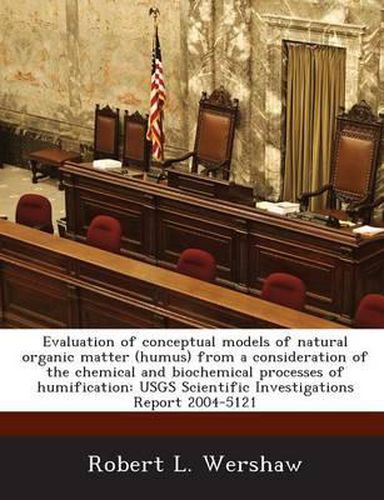Readings Newsletter
Become a Readings Member to make your shopping experience even easier.
Sign in or sign up for free!
You’re not far away from qualifying for FREE standard shipping within Australia
You’ve qualified for FREE standard shipping within Australia
The cart is loading…






Natural organic matter (NOM) has been studied for more than 200 years because of its importance in enhancing soil fertility, soil structure, and water-holding capacity and as a carbon sink in the global carbon cycle. Two different types of models have been proposed for NOM: (1) the humic polymer models and (2) the molecular aggregate models. In the humic polymer models, NOM molecules are depicted as large (humic) polymers that have unique chemical structures that are different from those of the precursor plant degradation products. In the molecular aggregate models, NOM is depicted as being composed of molecular aggregates (supramolecular aggregates) of plant degradation products held together by non-covalent bonds. The preponderance of evidence favors the supramolecular aggregate models. These models were developed by studying the properties of NOM extracted from soils and natural waters, and as such, they provide only a very generalized picture of the structure of NOM aggregates in soils and natural waters prior to extraction. A compartmental model, in which the structure of the NOM in each of the compartments is treated separately, should provide a more accurate representation of NOM in soil and sediment systems. The proposed NOM compartments are: (1) partially degraded plant tissue, (2) biomass from microorganisms, (3) organic coatings on mineral grains, (4) pyrolytic carbon, (5) organic precipitates, and (6) dissolved organic matter (DOM) in interstitial water. Within each of these compartments there are NOM supramolecular aggregates that will be dissolved by the solvent systems that are used by researchers for extraction of NOM from soils and sediments. In natural water systems DOM may be considered as existing in two subcompartments: (1) truly dissolved DOM and (2) colloidal DOM.
$9.00 standard shipping within Australia
FREE standard shipping within Australia for orders over $100.00
Express & International shipping calculated at checkout
Natural organic matter (NOM) has been studied for more than 200 years because of its importance in enhancing soil fertility, soil structure, and water-holding capacity and as a carbon sink in the global carbon cycle. Two different types of models have been proposed for NOM: (1) the humic polymer models and (2) the molecular aggregate models. In the humic polymer models, NOM molecules are depicted as large (humic) polymers that have unique chemical structures that are different from those of the precursor plant degradation products. In the molecular aggregate models, NOM is depicted as being composed of molecular aggregates (supramolecular aggregates) of plant degradation products held together by non-covalent bonds. The preponderance of evidence favors the supramolecular aggregate models. These models were developed by studying the properties of NOM extracted from soils and natural waters, and as such, they provide only a very generalized picture of the structure of NOM aggregates in soils and natural waters prior to extraction. A compartmental model, in which the structure of the NOM in each of the compartments is treated separately, should provide a more accurate representation of NOM in soil and sediment systems. The proposed NOM compartments are: (1) partially degraded plant tissue, (2) biomass from microorganisms, (3) organic coatings on mineral grains, (4) pyrolytic carbon, (5) organic precipitates, and (6) dissolved organic matter (DOM) in interstitial water. Within each of these compartments there are NOM supramolecular aggregates that will be dissolved by the solvent systems that are used by researchers for extraction of NOM from soils and sediments. In natural water systems DOM may be considered as existing in two subcompartments: (1) truly dissolved DOM and (2) colloidal DOM.